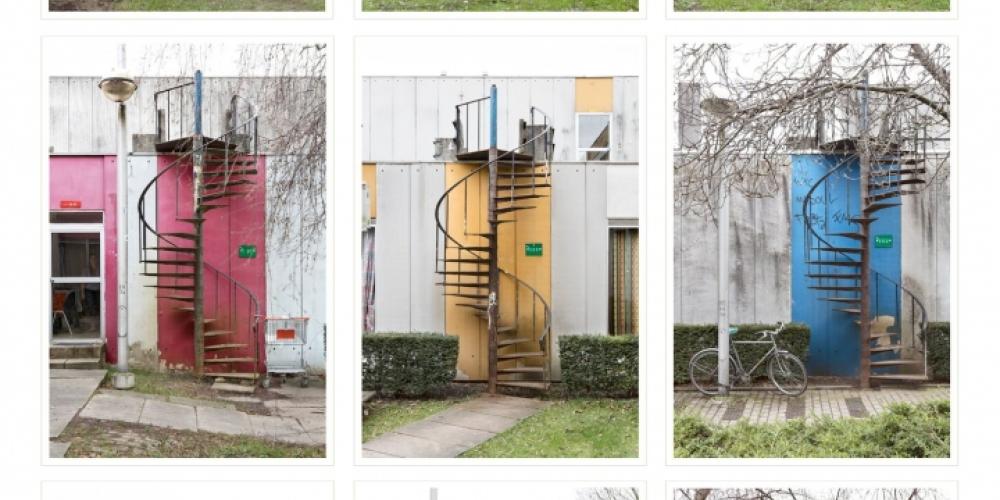
During the opening, 14th of February at 7pm, Prof. Ir. Arch. Ine Wouters (VUB Architectural Engineering) will comment on the student houses of VUB constructed by Willy Van Der Meeren in 1972.
Willy Van Der Meeren loathed the word architecture. Even worse he thought of the buzzword ‘design’. He rather spoke of “building art”. Of the art of reaching maximal results with simple materials. With plywood plaques, rubber hosepipes, cheap wood kinds, corrugated iron, but above all with steel and concrete Van Der Meeren – with Le Corbusier in mind- built modular living units customised to the masses. Or for students. Since the student residences that he erected for the VUB illustrate his vision.
CLUB MED
For years on end, students named this colourful site ‘the Club Med’ of the campus. This name was probably inspired by the simple and modular character of the building plan. Van Der Meeren planted five living units on the VUB site, which were repeatedly made up of two floors. Every floor was equipped with a kitchen and a bathroom, which were shared between the inhabitants of the four connected student rooms. Van Der Meeren ensured the recognisability of every living unit by providing each of them with a remarkable colour. But it is especially the choice of materials that bespeaks the controversially creative mind of the building-artist. To enter their lodging, students have to take three treads on a quirky staircase: a stack of pre-fabricated concrete elements out of the railway industry.
PHOTOGRAPHY
The heritage of modernism is something that has been occupying Annemie Augustijns for several years. In a previous photography series, she examined, amongst other elements, the colour use of modernist architecture. Or what is left of it. Because notwithstanding her fascination for the aesthetics of these iconic buildings, Annemie is not blind for their expiry date.
How relevant are these forms and colours still for us nowadays? And how have man and nature come to crack the iconic image imprinted on our retina when we contemplate Modernism? Augustijns leaves these questions without an answer. But the pragmatic way by which she captures the crucial elements of the Van Der Meeren heritage betrays that – whilst still beautiful - something in it has been irrevocably broken.
ABSTRACT DRAWINGS
The artistic practice of Sofie Van der Linden roots in the marvel for the way in which mankind furnishes its living environment. Whatever catches her eye in everyday reality, firstly gets a repercussion in her sketchbooks. In a following stage, Van der Linden digs further into these notes and drawings to process them into studies in which she maps the use of space, building or object. How can we imagine the way in which Van Der Meeren’s living units were used on a daily basis? What about the orientation and the view from every student room? And which structuring role do the paths that connect the labyrinth-site play? The end result of this nearly sociological research are autonomous, abstract drawings. From a distance these seem rather cold geometrical abstractions, but from nearby the pencil drawings bespeak an almost vulnerable naivety. The contrast between the with the loosely hand-drawn pencil lines on the one hand, and the massive, dark-coloured pencil planes on the other grant the works a poetic, still self-aware character.
SCULPTURES
Katleen Vinck has eye for the essential characters of natural or cultural sites. By investigating and purifying that essence in her studio, Vinck attains an entirely idiosyncratic morphology. With Willy Van Der Meeren she shares a liking for the radical simplicity of a functional form. And with her fascination for primordial constructions, like the dolmen, Vinck is in fact not far
removed from Van Der Meeren’s minimalistic modernism. For this exhibition Vinck made three sequences of sculptures wherein her own fascination for the primordial form –cave- and the primal material –rock- interlaced both literally and figuratively with Van Der Meeren’s search for a “building art” of piled up functional simplicity (basic units, basic cells/basic modules).
More information on www.valerietraan.be.